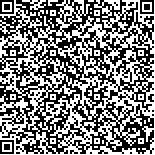| 摘要: |
| 在我国北方旱地秋收作物生长关键期,云雨天气影响较大,无法及时、有效地获取光学遥感数据,因此利用雷达遥感进行旱地作物识别研究非常必要。文章以河北省衡水市为研究区,选择6期RADARAST-2全极化影像作为数据源,分类方法为随机森林法。首先通过对比不同时相间的组合结果,优选出了研究区典型秋收作物(玉米、棉花)的最佳识别时相及组合方式。其次,提取最优识别时相的后向散射信息、纹理信息、极化分解等3部分信息,依据信息间相互组合的结果及随机森林算法对变量的重要性评价,文中对上述3部分信息进行了重要性评估。结果表明:利用SAR识别旱地秋收作物时应着重关注作物生长前期的时相,其中玉米在6月27日单一时相下就可获得90%以上的高精度; 棉花面积小、地块破碎,但通过6月3日与6月27日两个时相的结合也得到了70%以上的精度。在玉米识别中极化信息具有较大的贡献,极化变量的加入主要增加了玉米和建筑用地的可分离性,与单纯利用后向散射信息分类相比精度提高了近7%; 同样,纹理信息和极化分解信息的加入也使棉花的精度提高了3%。最后,利用随机森林算法对变量的重要性评价机制,优选出对玉米识别最为重要的5个变量,依次为:VH、Alpha、Yamaguchi4-Odd、Freeman-Vol和Mean(HV)。该研究利用雷达数据进行旱地作物识别,验证了雷达影像对旱地秋收作物的识别能力,不仅保证了数据获取与天气状况的独立性,还凭借SAR独有的数据获取方式,为光学数据提供了补充。 |
| 关键词: 合成孔径雷达(SAR)旱地农作物 分类 随机森林 变量优选 |
| DOI:10.7621/cjarrp.1005-9121.20160804 |
| 分类号: |
| 基金项目: |
|
| DRYlAND CROP IDENTIFICATION BASED ON SYNTHETIC APERTURE RADAR IN THE NORTH CHINA PLAIN |
|
Dong Zhaoxia1,2, Wang Di1,2, Zhou Qingbo1,2, Chen Zhongxin1,2, Liu Jia1,2
|
|
1.Key Laboratory of Agri-informatics,Ministry of Agriculture,Beijing 100081,China;2.Institute of Agricultural Resources and Regional Planning,Chinese Academy of Agricultural Sciences,Beijing 100081,China
|
| Abstract: |
| Crop identification is the initial phase and key step of crops condition monitoring.Timely and accurately monitoring the spatial distribution of crop types is the basis of monitoring the information of farming condition.With the development of remote sensing technology and the popularization of remote sensing data, remote sensing has become an important means in agricultural monitoring. In particular, a complete set of technological method using optical remote sensing data for crop identification has already formed. However, during the key grow period of dryland crops in North China, since rainy or cloudy it is difficult to obtain timely and effective optical remote sensing data, it′s impossible to ensure the acquisition of the data during the key growth period of crops by using optical remote sensing technology, thus the continuous monitoring and research of crops are hindered. Therefore, it is necessary to conduct the study of dryland crops identification by the means of Synthetic aperture radar (SAR), which overcomes the above restrictions due to its all-weather, all-day imaging capability. In addition, when detecting vegetation information with microwave remote sensing technology, information different from that acquired through optical remote sensing can be acquired. Based on the SAR data, this paper chose Shenzhou, Hengshui city of Hebei Province as the study area and used the RADARSAT-2 images covering the area from June 3 to October 1, 2014 as the study data source. Classification method was the Random Forest (RF). First, by contrasting the combination of different time, the optimal phase and phase combination was selected for typical dryland crop (corn/cotton) in the study area. Second, we extracted backscattering coefficients, texture information and polarimetric decomposition from optimal phase, and combine the information in different ways. The contribution of different combination of input data to a random forest classifier was evaluated with map accuracy statistics and the evaluation of variables importance. The results showed that when identifying dryland crops, radar remote sensing should pay attention to the early phases during the growth period of crops. The accuracy can reach more than 90% for corn on condition of single phase, cotton areas were usually small and distributed sporadically, but it also reached more than 70% through the combination of June 3 and June 27.While using texture information and polarimetric decomposition it also increased3%. Finally, variable importance was estimated following by VH、Alpha、Yamaguchi4-Odd、Freeman-Vol and Mean(HV). The results demonstrated the capacity of SAR can identify the dryland crops and the independence of data. SAR with unique acquisition mode provided a complement to optical data. |
| Key words: synthetic aperture radar (SAR) dryland crop classification random forest (RF) variable selection |

